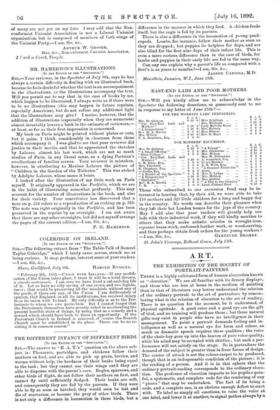THE DIFFERENT INFANCY OF DIFFERENT BIRDS.
[To THE EDITOR OF THE "SPECTATOR."] SIR,—The answer to "E. A. T.'s " question on the above sub- ject is : Pheasants, partridges, and chickens follow their mothers on foot, and are able to pick up grain, berries, and worms without help, the hardness of their beaks being equal to the task ; but they cannot use their wings until they are able to dispense with the parent's care. Eagles, sparrows, and other birds of flight, do not follow their mothers on foDt, and cannot fly until sufficiently fledged. Their beaks are soft, and consequently they are fed by the parents. If they were able to fly as soon as hatched, they would soon be lost and die of starvation, or become the prey of other birds. There is not only a difference in locomotion in these birds, but a
difference in the manner in which they feed. A chicken feeds itself, but the eagle is fed by its parents.
There is also a difference in the locomotion of young quad- rupeds. Lambs, for instance, follow their mother as soon as they are dropped ; but puppies lie helpless for days, and are also blind for the first nine days of their infant life. This is even a more curious difference than in the case of birds, for lambs and puppies in their early life are fed in the same way..
Can any one explain why a parrot's life as compared with a fowl's is as years to months ?—I am, Sir, &c.,


































 Previous page
Previous page